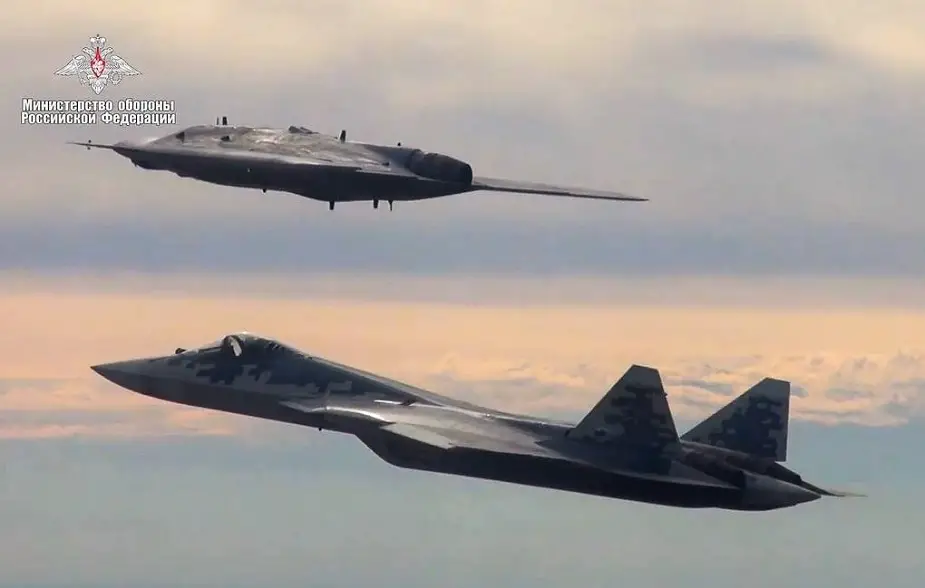The Russian Defense Ministry published the footage of a joint flight of Okhotnik combat drone and the fifth-generation Su-57 fighter jet. The drone was controlled by the jet. The ministry said such a configuration considerably increases the radar field of the fighter jet. The Military-Industrial Courier writes about the main missions of the new drone.
 Su-57 fighter jet and Okhotnik UAV (Picture source: Russian MoD)
Su-57 fighter jet and Okhotnik UAV (Picture source: Russian MoD)
Okhotnik will fight a high-tech adversary, i.e. NATO countries. It is the reason for the deployment place of two new drone detachments. The Western Military District opposes the North Atlantic alliance in the Baltic region and Poland. The Southern District controls the Black Sea or NATO southern flank where Bulgarian and Romanian troops are active. The US missile defense is also deployed in the direction.
It is likely that, besides usual optical-electronic systems, Okhotnik will also carry sophisticated electronic reconnaissance means. The video of Okhotnik flights confirms it. The fuselage has characteristic overhangs which likely accommodate electronic reconnaissance antennas.
The Russian Defense Ministry officially said that Okhotnik will carry a radar. It will most likely survey ground targets and search for air objects.
Okhotnik can also be engaged against terrorists, however it does not seem appropriate as Okhotnik is an expensive drone. It is likely to cost a little bit less than a fifth-generation Su-57 fighter jet.
Okhotnik needs interaction and information exchange with Su-57, as it has to expose hostile airpower. A Su-57 squadron acts against NATO aviation backed by ground radars and air defense. Okhotnik secretly advances into the airspace to collect information. Its electronic reconnaissance detects active radars and communications of headquarters and command posts.
The data are transmitted to fighter jets in real time, targets are distributed before the attack and the sequence of strikes is decided. Okhotnik can itself destroy some adversary objects, as it carries guided missiles and bombs.
Technically, Su-57 needs a powerful control system with a high cryptosecurity to operate together with Okhotnik. Not all Su-57 are likely to get the system.
The integration of sophisticated craft needs high automation, as well as artificial intellect elements. The pilot has to tell the drone its flight route and time and set search priorities. The pilot is likely to set targets for the drone himself.
Okhotnik has to operate independently after that and choose the best approach to the target or report the danger of radar detection. The drone is likely to have a standard set of maneuvers which it will conduct independently or by the command from the fighter jet. However, the drone control system has to assess the situation itself, including flight parameters, and thus partially replace the pilot.
Several years ago foreign experts and journalists said Russia was successful in drone creation, but was too far from developing such sophisticated vehicles as RQ-4 and RQ-180. Thus, Okhotnik became a surprise. The Aerospace Forces will get a vehicle in 2020s which is unrivalled in the world so far, the Military-Industrial Courier said.
© Copyright 2019 TASS. All rights reserved. This material may not be published, broadcast, rewritten or redistributed.
















